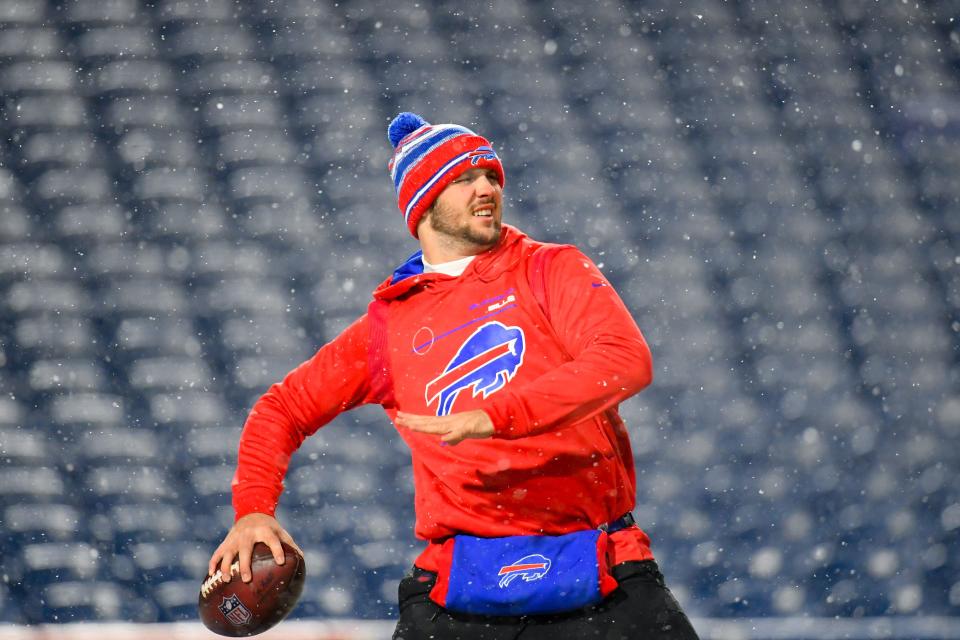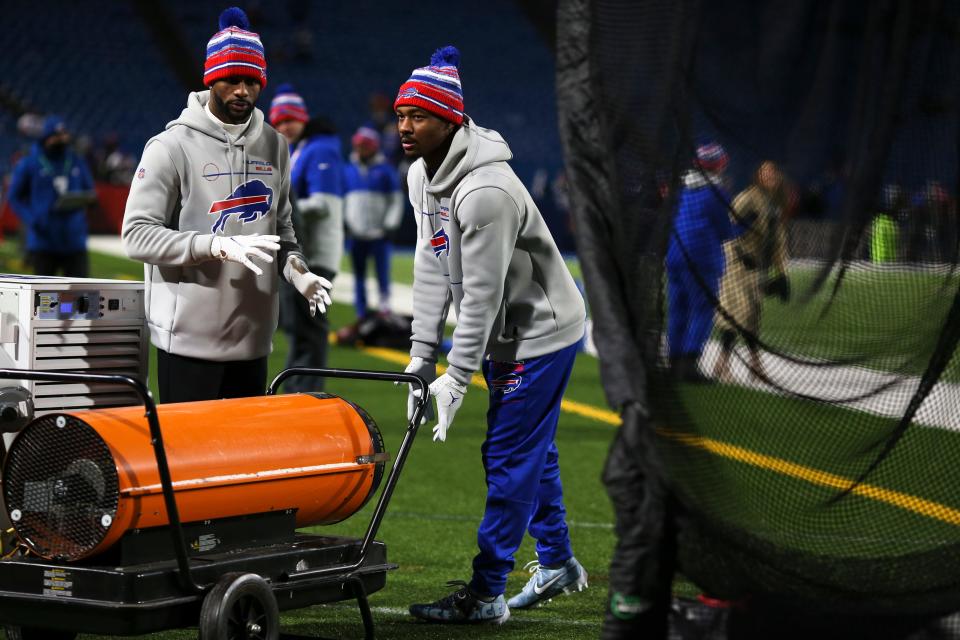How NFL players stay warm during extreme cold: Do their methods work?
About the only true equalizer that can separate any other outside factors that determine winners of a football game is the weather. Both teams have to play in and adjust to it, no matter how bad the conditions. It can also be used strategically.
But other than that, players have generally suffered just the same, whether it’s fog, rain, snow, wind or extremely frigid conditions.
At least one site for this weekend’s divisional playoff games is expecting temperatures to plunge into single digits, which will no doubt bring out the creativity in some players and teams with keeping warm.
There will be heated benches, sideline heaters, and in the case of Lambeau Field and Arrowhead Stadium, an under-the field heating unit so it doesn’t feel like concrete when players are slammed to the turf.
Sideline heaters can be dangerous, as a Kansas City Chiefs staffer found out earlier this month when his jacket caught on fire when it got to close to a space heater.
GREEN BAY: Packers-49ers forecast calls for wind chill of zero, possible snow
FROZEN TUNDRA: Coldest games in Lambeau Field history since the Ice Bowl

When games are played in extreme weather, the NFL has a message for any complainers: too bad.
The league hasn’t postponed, canceled or moved a game because of extremely cold weather in nine decades.
Over the years, players have tried anything and everything to keep from freezing. When at Notre Dame, Joe Montana famously gulped down chicken broth during the 1979 Cotton Bowl against Houston to combat hypothermia. Tom Brady spent 20 seasons with the New England Patriots and was known to wear SCUBA gear under his uniform when playing in the less-than-tepid winters. Even slapping a layer of Vaseline on the arms and the face can help deter the effects of the bitter cold.
If that doesn’t work, the tried-and-true method of wear long underwear, or long johns, seems to do the trick. Battery-operated hand and feet warmers are effective devices employed.
But staying dry is the key to combating any cold-weather situation, said Dr. Shawn Anthony, sports medicine orthopedic surgeon at Mount Sinai Health System.
Anthony said it is critical that the hands and feet are the most susceptible areas for frostbite, especially after being exposed to wet conditions and are not kept dry.
In terms of keeping warm, those aforementioned ideas are not as far-fetched as they sound.
For anyone, not just football players, venturing out into the cold comes with basic common-sense principles.
"Move as much as possible and stay active on the sidelines, not just sitting. And layers are just as equally important," Dr. Dennis Cardone, chief of the Division of Primary Care Sports Medicine, NYU Langone told USA TODAY Sports. "Football is a tough sport because it’s so stop and go. But there is also a fine line between having the right gear and too many layers."
Cordone said it’s not typical that frostbite will set in quickly, especially when the skin is covered up by material, but when temperature get near below zero.

"I think I would be more concerned about spectators," added Dr. Cordelia Carter, Director of Women's Sports Medicine Center and Pediatric Sports Medicine program at New York University. "Especially those who may not notice they are having pain in their legs, fingers or toes if they are drinking."
Drinking warm beverages, even hot water, are generally fine for hydration during a game in freezing temperatures but do nothing in terms of staying warm or increasing one’s core body temperature. Chicken broth and chicken soup contain protein, electrolytes and salt that can also aid in warmth.
If players have an extra SCUBA suit lying around the team facility, they could try that as well. SCUBA wetsuits are generally made of rubber-like material that are unaffected by heat and weathering.
"The idea with SCUBA gear is if you have a layer of air between your skin and that air is heated, it might actually work better than just wicking clothing. So, there is actually some scientific thought behind it, but the reasoning behind using it makes sense," Carter said.
Petroleum jelly is most effective when the conditions are windy as it helps to insulate the skin, which prevents it from losing heat and moisture. It may also aid in offensive skill players' ability to break the tackles of defenders.
"But it wouldn’t necessarily be my go-to to stay warm," Cordone said about Vaseline.
Cordone and Carter said that there is one myth to dispel about beverages that have been tried to increase warmth.
"There is this myth about alcohol and it keeping you warm, but it actually increases your risk for cold injuries," Cordone said.
Chances are teams and the NFL don’t have to worry about the players getting liquored up on the sideline.
Follow Scooby Axson on Twitter @ScoobAxson.
This article originally appeared on USA TODAY: How NFL players stay warm during extremely cold weather

